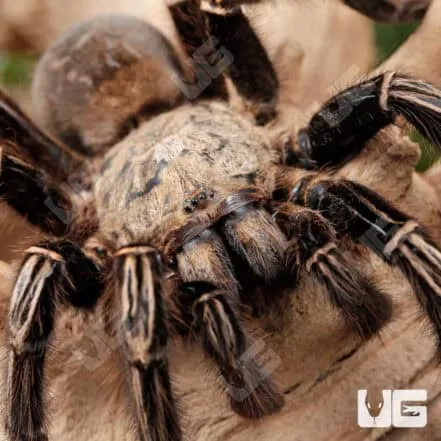Skeleton Leg Tarantula Care Top 5 Tips!
The Skeleton Leg Tarantula, known for its striking white markings on a dark body, is a fascinating pet. Providing the right care is crucial for its health and longevity. This guide offers the top 5 essential tips for successfully keeping these arachnids. Proper care ensures that your Skeleton Leg Tarantula thrives in its environment, allowing you to enjoy observing its unique characteristics and behaviors. Remember, each tarantula is an individual, and observation of its specific needs is essential.
Choosing the Right Enclosure for Your Skeleton Leg Tarantula
The enclosure is the foundation of your Skeleton Leg Tarantula’s habitat, so getting it right is paramount. A well-designed enclosure provides the necessary space, ventilation, and security for your tarantula to thrive. Consider the size of your tarantula, its growth rate, and its terrestrial nature when choosing the right enclosure. An appropriately sized enclosure helps regulate temperature and humidity, crucial elements for your pet’s well-being. Avoid enclosures that are too large, as this can make it difficult for the tarantula to find food and feel secure. A secure enclosure also prevents escapes, which can be detrimental to both the tarantula and your household.
Enclosure Size and Dimensions
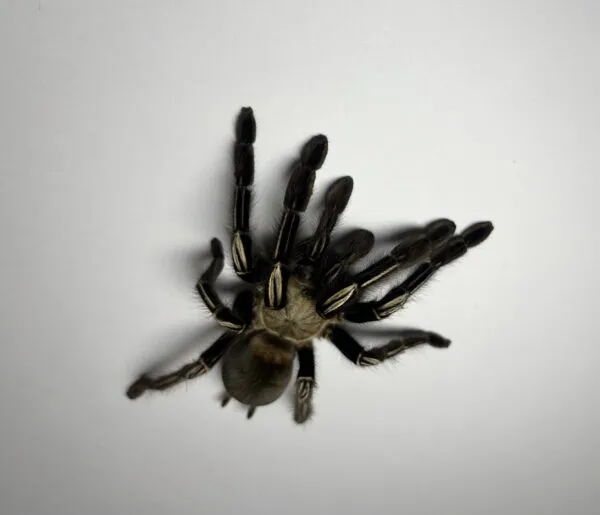
For juvenile Skeleton Leg Tarantulas, a small enclosure (e.g., 10-gallon tank) is often sufficient. As they grow, you’ll need to upgrade to a larger enclosure. A good rule of thumb is to provide an enclosure that is at least three times the tarantula’s leg span in width and length. Height is also a factor; while these tarantulas are terrestrial, they may climb, so ensure the height accommodates this behavior. Ventilation is also vital; the enclosure should have adequate cross-ventilation to prevent the buildup of stagnant air and mold. The enclosure should also have a secure lid to prevent escapes. Mesh lids are a good option, but ensure the mesh size is small enough to prevent the tarantula from squeezing through.
Substrate Selection for Skeleton Leg Tarantulas
The substrate serves as the flooring of your tarantula’s enclosure and plays a vital role in maintaining humidity and providing a natural environment for burrowing. The right substrate not only helps regulate the enclosure’s microclimate but also gives your Skeleton Leg Tarantula a place to hide and feel secure. Different substrates have varying moisture-retaining properties and are appropriate for different tarantula species. The choice of substrate should align with the specific needs of your Skeleton Leg Tarantula. Consider the tarantula’s natural habitat and the substrate’s impact on humidity and overall cleanliness. Proper substrate management will help prevent mold and bacterial growth, which can negatively impact your tarantula’s health.
Ideal Substrate Depth and Type
A mixture of substrate types is often the best for maintaining humidity and offering burrowing opportunities. A good base substrate for Skeleton Leg Tarantulas includes a mix of coconut fiber, peat moss, and a bit of sphagnum moss. These materials retain moisture well and allow the tarantula to burrow. The substrate depth should be at least 4-6 inches, allowing the tarantula to dig and create burrows for shelter. Avoid substrates that are dusty or contain chemicals, as these can irritate the tarantula. Replace the substrate entirely every 6-12 months, or sooner if it becomes heavily soiled or moldy.
Maintaining Proper Humidity Levels
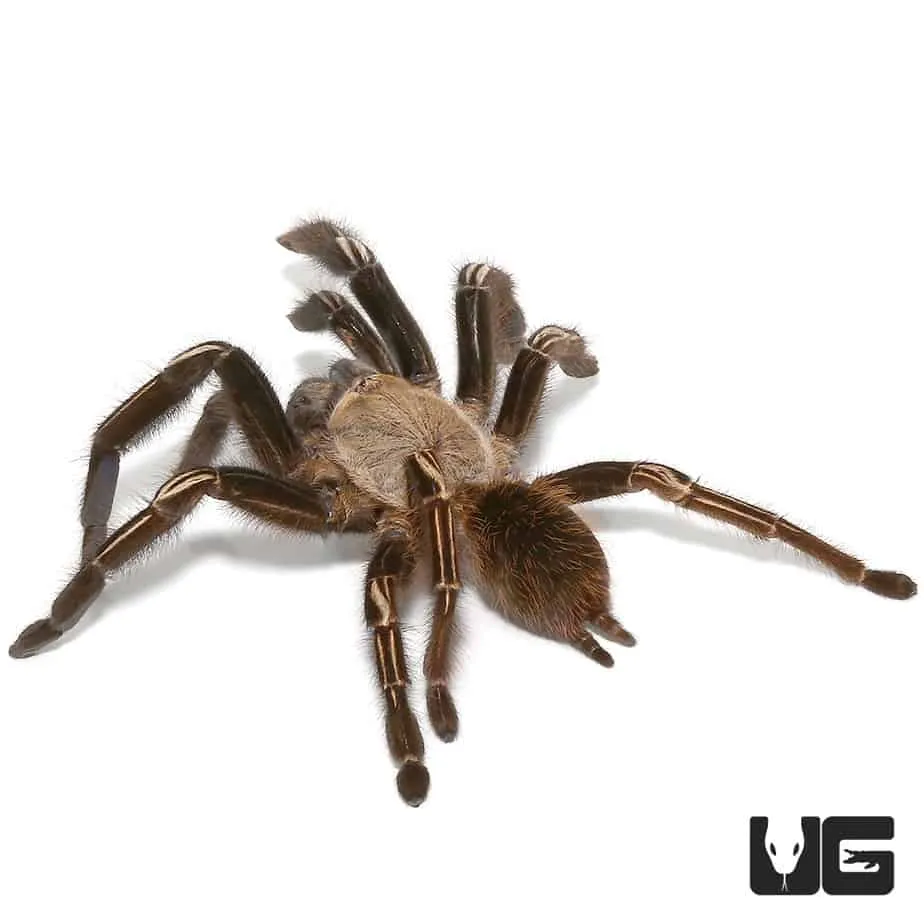
Humidity is crucial for the health of your Skeleton Leg Tarantula. These tarantulas require a specific humidity range to thrive, which aids in their molting process and overall well-being. Maintaining the correct humidity levels prevents dehydration and allows the tarantula to breathe properly. Monitoring and adjusting humidity is a critical part of Skeleton Leg Tarantula care. Failure to maintain proper humidity can lead to health problems, including failed molts and even death. Regular observation and consistent adjustments based on environmental conditions are necessary.
Monitoring Humidity in the Enclosure
Use a hygrometer to monitor the humidity levels. A digital hygrometer is recommended for its accuracy and ease of use. Ideally, the humidity should be maintained between 65% and 75%. Place the hygrometer in a visible location within the enclosure to easily track the humidity. Check the hygrometer regularly, ideally daily, to ensure the humidity is within the recommended range. Any deviations outside of this range should prompt you to adjust your care routine. Record the humidity readings to track changes over time and understand what works best for your tarantula’s specific environment.
Humidity Control Techniques
To increase humidity, mist the enclosure with dechlorinated water. Mist the sides of the enclosure and the substrate, but avoid directly spraying the tarantula. The frequency of misting will depend on your environment, but typically once or twice a week is sufficient. Use a water dish with a shallow depth to provide a constant source of water and increase ambient humidity. Covering a portion of the enclosure’s ventilation with tape can help trap moisture. If the humidity is too high, increase ventilation by adjusting the lid or the airflow. Remember, the key is to strike a balance – too much or too little humidity can be detrimental. Monitor and adjust as needed based on the readings on your hygrometer.
Temperature Regulation for Skeleton Leg Tarantulas
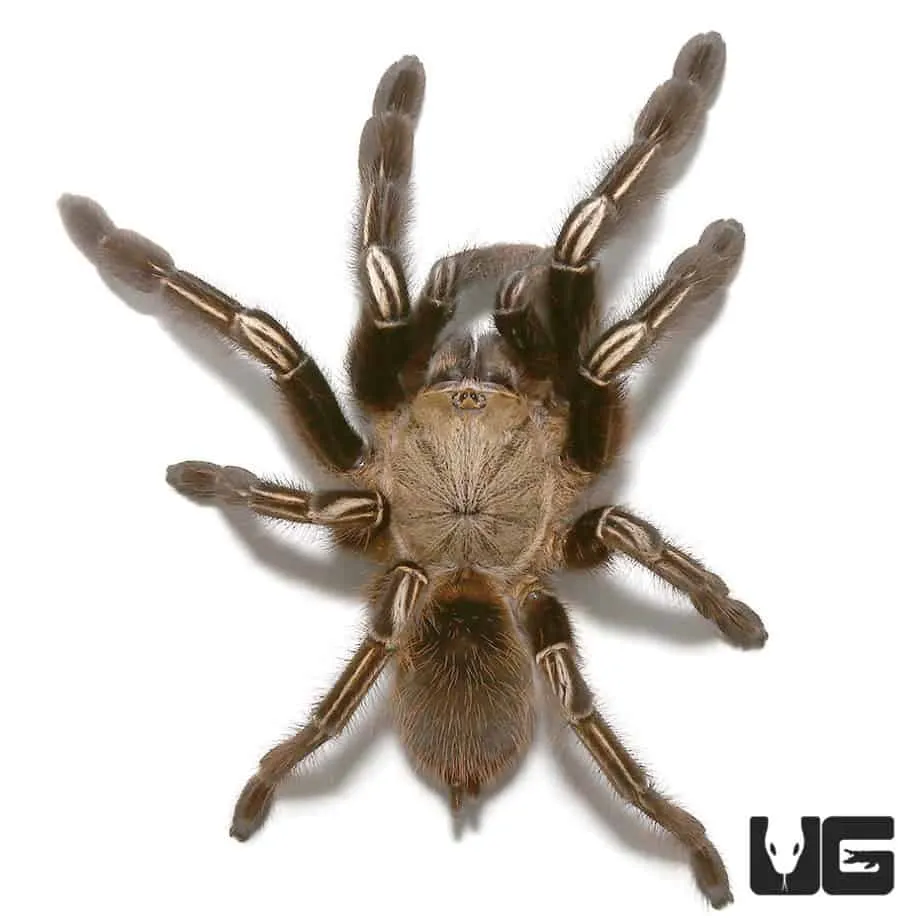
Temperature control is another critical factor in Skeleton Leg Tarantula care. Providing the right temperature range allows your tarantula to metabolize food efficiently and stay active. Temperature directly affects their behavior, molting cycle, and overall health. Maintaining the correct temperature supports the tarantula’s biological processes, making them a vital part of the care routine. Temperature fluctuations should be kept to a minimum, as rapid changes can stress the tarantula. Always monitor the temperature using a reliable thermometer and adjust as needed.
Optimal Temperature Range
The ideal temperature range for Skeleton Leg Tarantulas is between 75°F and 85°F (24°C to 29°C). The temperature should be consistently maintained within this range to ensure optimal health. A small temperature gradient, with slightly warmer temperatures in one area of the enclosure, can benefit the tarantula by allowing it to regulate its body temperature. Place a thermometer inside the enclosure at the same level as the tarantula to accurately monitor the temperature. Avoid placing the enclosure in direct sunlight or near heat sources like radiators, as these can cause significant temperature fluctuations.
Heating Methods and Safety
Heating can be achieved with a heat mat placed on the side of the enclosure or a ceramic heat emitter. Never place a heat mat directly under the enclosure, as this can cause the substrate to dry out and burn the tarantula. Always use a thermostat with any heating device to regulate the temperature and prevent overheating. Ensure the heat source is out of reach of the tarantula to prevent burns. Monitor the temperature regularly with a thermometer to ensure it remains within the ideal range. Use a well-ventilated enclosure, even with a heat source, to avoid humidity issues.
Feeding Your Skeleton Leg Tarantula

Proper feeding is fundamental for a healthy Skeleton Leg Tarantula. A well-nourished tarantula is more likely to exhibit healthy behaviors, grow properly, and have a longer lifespan. The type and frequency of feeding depend on the tarantula’s age and size. Overfeeding can lead to problems, so it is important to find a feeding routine that suits the individual tarantula’s needs. Carefully observe your tarantula to determine its appetite and adjust the feeding schedule accordingly. Always offer appropriately sized food items and ensure the tarantula is eating them without difficulty.
Appropriate Food Types
The primary food source for Skeleton Leg Tarantulas should be live insects. Good options include crickets, roaches, and mealworms. The insects should be gut-loaded (fed nutritious food) before being offered to the tarantula to provide the tarantula with a better nutritional value. Avoid feeding your tarantula insects caught outdoors, as they may carry parasites or pesticides. The size of the prey should be appropriate for the size of your tarantula; it should ideally be no larger than the tarantula’s body. Remove any uneaten food items within 24 hours to prevent mold and maintain a clean environment.
Feeding Frequency and Portion Sizes
Juvenile tarantulas should be fed more frequently than adults. Feed juveniles 2-3 times per week. Adult Skeleton Leg Tarantulas can be fed once or twice a week. Adjust the feeding frequency based on the tarantula’s appetite and molt cycle. Do not feed your tarantula if it is in premolt (when it is preparing to molt) as they may refuse to eat. Overfeeding can lead to an unhealthy tarantula. Ensure the tarantula consumes all of its food within a reasonable timeframe and remove any leftovers. The size of each portion will vary based on the size of the tarantula.
Watering and Hydration
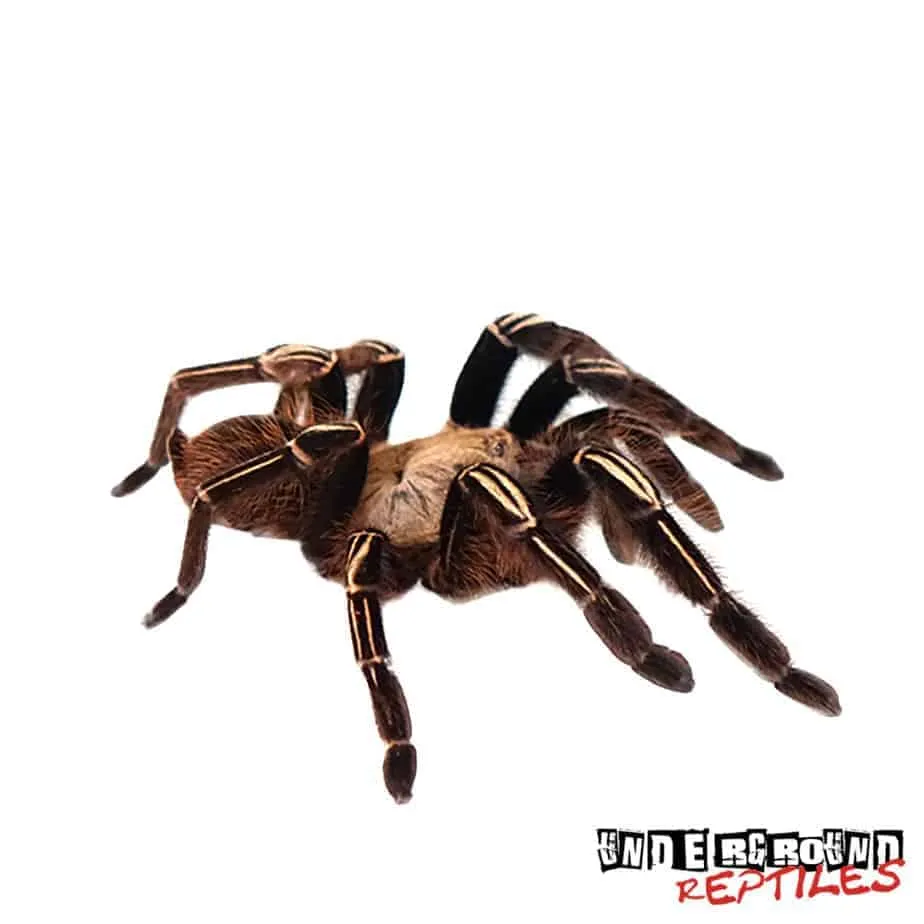
Providing clean water is essential for your Skeleton Leg Tarantula’s hydration and overall health. Tarantulas need access to a fresh water source at all times, especially in drier environments. Dehydration can lead to health problems, so it is a critical part of your tarantula’s daily care. Proper hydration is essential for the tarantula’s molting process and general well-being. A reliable water source is a must for keeping your tarantula happy and healthy.
Water Source and Availability
Provide a shallow water dish within the enclosure. The dish should be shallow enough to prevent the tarantula from drowning. Use a water dish made of a non-porous material that is easy to clean. Alternatively, you can provide water by misting the enclosure. Replace the water regularly, ideally every 1-2 days, to keep it fresh and prevent bacterial growth. Ensure the water is chlorine-free, as chlorine is harmful to tarantulas. If you use tap water, dechlorinate it before offering it to your tarantula.
Watering Frequency
The watering frequency will depend on the humidity levels of the enclosure and the needs of your tarantula. Provide the water dish at all times, and refill it as needed. Mist the enclosure with dechlorinated water as needed to maintain appropriate humidity. Observe your tarantula and the substrate. If the substrate appears dry, increase the frequency of misting. It is important to strike a balance, avoiding both dehydration and excessive moisture, which can cause mold and health issues. Regular observation and adjustments based on the specific needs of your tarantula are essential.
Handling and Interaction Safety
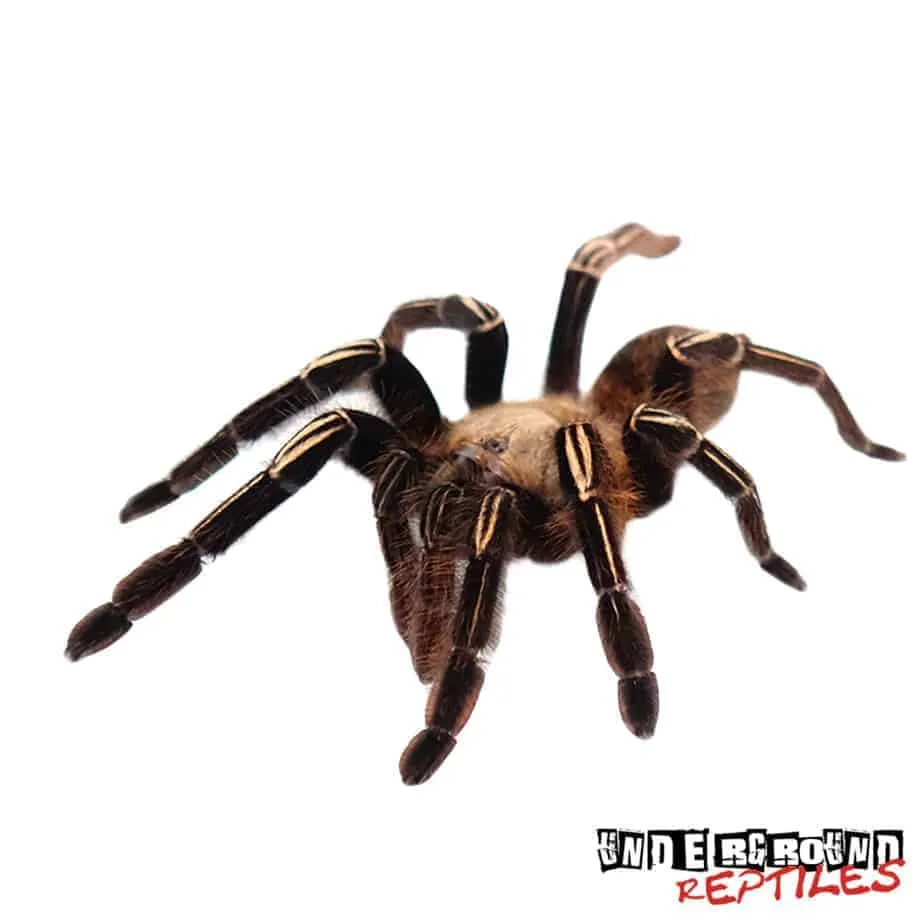
While Skeleton Leg Tarantulas are not typically aggressive, handling them should be done with caution and knowledge. Understanding their behavior and practicing safe handling techniques protects both the tarantula and the handler. Handling should be kept to a minimum, as it can stress the tarantula. Tarantulas are delicate creatures, and mishandling can lead to injury or even death. If handling is necessary, it should be done in a controlled environment with a clear understanding of the potential risks and safety measures.
Understanding Skeleton Leg Tarantula Behavior
Skeleton Leg Tarantulas can be skittish and prone to bolting. Rapid movements or unexpected changes in their environment can trigger defensive behaviors, such as flicking urticating hairs or attempting to bite. Before attempting to handle your tarantula, observe its behavior. If the tarantula appears stressed, defensive, or agitated, it is best to avoid handling it. Learning to read the subtle signs of stress will help you protect both yourself and the tarantula. Avoid handling during premolt or shortly after molting, as they are especially vulnerable during these times. Be patient and cautious during any interaction.
Safe Handling Practices
If you must handle your Skeleton Leg Tarantula, do so in a confined space, such as inside the enclosure or over a soft surface, to minimize the risk of injury from a fall. Wash your hands thoroughly before and after handling to prevent transferring any oils or chemicals. Avoid sudden movements, and let the tarantula walk onto your hand. Do not try to grab or restrain the tarantula. Be prepared for the possibility of a bite. If bitten, clean the wound thoroughly and seek medical attention if necessary. Handling should be considered a last resort; observing your tarantula from a distance is the best way to enjoy your pet and ensure its safety.
Health and Wellness
Keeping your Skeleton Leg Tarantula healthy requires an understanding of common health issues and a commitment to preventative care. Regular observation of your tarantula’s behavior and physical condition can help you catch any problems early on. The environment and care routine provided are important factors in maintaining the health of your tarantula. Prevention is key when it comes to spider health. By focusing on these aspects, you are investing in a long and healthy life for your pet. The health of your tarantula depends on the care provided by you.
Recognizing Common Health Issues
Look for signs of illness, such as lethargy, loss of appetite, unusual postures, or changes in the abdomen or legs. Issues with molting are common; a tarantula that fails to molt properly may have difficulty shedding its old exoskeleton. Parasites can also cause health problems. Check for mites or other parasites, and if you notice any signs of these, consult an experienced tarantula keeper or a veterinarian familiar with arachnids. Dehydration and improper humidity can lead to health issues. Proper care and monitoring are your best defenses against these issues. If you see any signs of illness, address them as quickly as possible.
Preventative Care and Maintenance
Maintaining a clean and suitable environment is vital for preventing health issues. Regularly clean the enclosure, removing uneaten food and waste. Provide the correct temperature and humidity. Ensure the enclosure is well-ventilated to prevent mold and bacterial growth. Offer a varied and nutritious diet. Regular inspection and preventative measures help the tarantula stay healthy. If you suspect a health problem, isolate the tarantula and consult an experienced keeper or vet. Prevention will always be better than the cure. By following these guidelines, you are doing what you can to ensure your Skeleton Leg Tarantula leads a long and healthy life.
